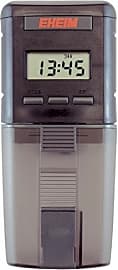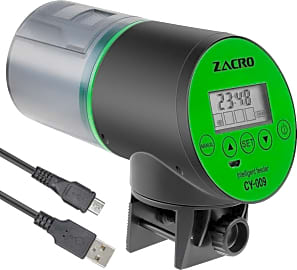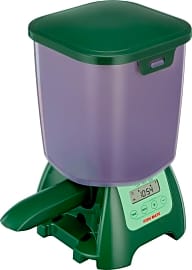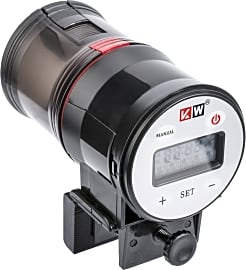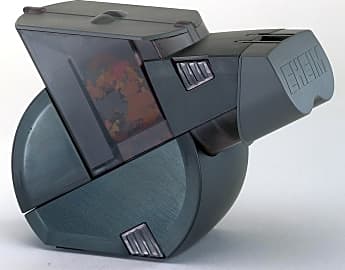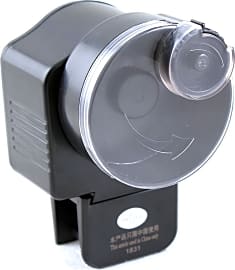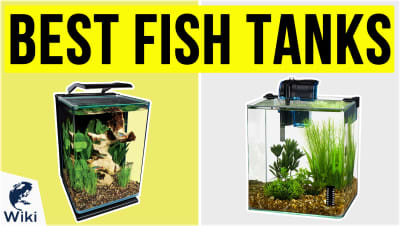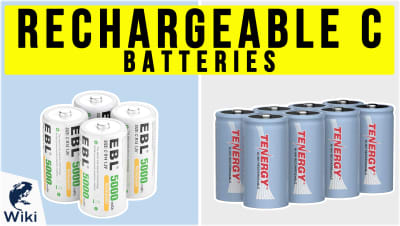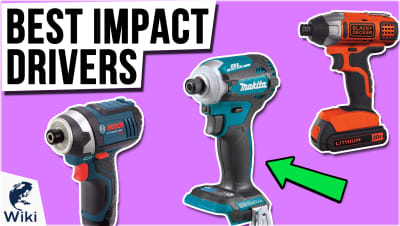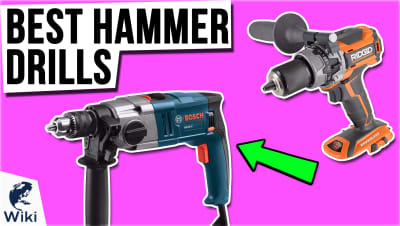The 10 Best Auto Fish Feeders


This wiki has been updated 37 times since it was first published in October of 2015. If long hours at the office keep you from feeding your fish regularly, or you’re going on vacation, one of these automatic feeders can dispense flakes, granules or pellets on a set schedule. They can be programmed to accommodate various schedules and portion sizes, and we've included models for both ponds and aquariums. Just be sure to test them for a few days before you leave town for a week. When users buy our independently chosen editorial choices, we may earn commissions to help fund the Wiki.
Editor's Notes
May 20, 2021:
We saw quite a lot of turnover during this round of updates, as we were eager to incorporate some exciting new options to our list, and also interested in purging it of any items that may have been suffering from availability issues. In the end, we scrapped almost half of our rankings, and the models we got rid of were the Coodia Adjustable, Flexzion Automatic, ADA AF-01 and eBoTrade 800EB.
In the interest of replacing the Flexzion Automatic, which was previously our only pick that was well suited to pond maintenance, we added two new options to our list. While the Fish Mate P7000 – which runs on four C batteries – is recommend for use on ponds that don’t have convenient access to an electrical outlet, the Hygger Programmable – which comes with a 16-foot power cord and is one of the few 120-volt models on the market – is recommended if plugging in is an option.
You’ll need to anchor it down with a few fasteners, which might be a bit of a pain, but as long as you’ve got an impact driver (for wood installs) or a hammer drill (for concrete installs) on hand, it shouldn’t take too long, and the stability this affords the unit allows it to stay steady even though it hangs from a 15-inch arm, which, depending on your landscaping, could wind up being a lifesaver.
We also added the Lukovee CY-059D and Zacro CY-009 to our list; both of which are better suited to use with fish tanks. These two sport designs that are very similar in many ways. They both have 200-milliliter capacities, they both have long-lasting batteries that charge via USB, and they even have similar housing and clamp designs, but when it comes to their displays, the CY-059D outshines the CY-009.
While the CY-009 uses a simple graphic to let you know whether or not scheduled meals have occurred, the CY-059D goes a step further and labels the time for each feeding, which may provide some peace of mind for diligent pet owners. Granted, it isn’t a massive difference in utility, but it is one of the only noticeable differentiators separating them. So, if you’re stuck between the two, considering that both units have garnered excellent customer ratings and share very similar prices, our advice is to invest in the CY-059D.
If you’ve got any more aquarium equipment on your shopping list today, there’s a good chance that we have a set of rankings to help you out. We maintain pages for everything from thermometers and skimmers to air pumps and heaters.
January 08, 2020:
The Eheim Auto moves into the number one spot on our list in this update, as it’s as reliable as they come and provides a good value for its low price. It features a drum volume of 3.3 fluid ounces (which is 100 milliliters) and can be programmed via its user-friendly LCD to dispense food up to eight times in a 24-hour period. It’s compatible with most types of food, and it can even be used to feed non-fish pets like gerbils or hamsters.
For a simple, lower-tech model, look to the newly added Hydor EkoMixo, which doesn’t use a digital screen, but just one simple button to program it to feed your fish, once, twice, or three times a day. It does have handy, color-coded lights so you can tell with a quick glance which of the three feeding frequencies you have set up. Rubber grips on its underbelly keep it from moving around easily, while an interior weight keeps it from tipping over when it’s filled with food.
If you’ve got a whole pond full of mouths to feed, check out the Flexzion Automatic, which has a 4.25-liter capacity. It conveniently can stand freely, or it can also be mounted to a base, so you’ll really be able to place it anywhere around your pond. It’s programmable for up to 99 days, so you truly can set it and forget it.
If you’re also in the market for a home for your fish, be sure to check out our list of the best fish tanks, which feature small models designed to hold one or two fish, all the way up to 50-gallon ones that can hold plenty of piscine creatures, other animals, and plants.
Special Honors
Pond King Floating Fish Feeder Automated supplemental feeding is often a must when you’ve got a large pond or a lake full of fish. This American-made feeder has a four-float design for stability, even during strong storms. Thanks to its powder-coated, all-aluminum construction, it’s made to last for years. Filling it is quick and easy with the weighted-loop anchor option, which you can use to pull it into the shoreline or up to your dock. This mechanism comes with 100 feet of rope, a stake, and a cinder block anchor with swivel. You can even attach a weight to the swivel and fill the feeder from a boat. An optional remote control makes it easy to feed the fish with the press of a button. It’s equipped with a programmable timer and a varmint guard, the optional anchor kit, and an optional battery and solar panel. pondking.com
Pentair Aquatic Eco-Systems A sister company to the popular pool-equipment manufacturer of the same name, this outfit is worth checking out if you need something that can handle a workload more substantial than sprinkling a few flakes for your goldfish periodically. On the small end, their offerings start with pond feeders, and go up from there all the way to customized robotic feeding systems for aquaculture operations. pentairaes.com
Fish Need Food, Too
One moment they'd realize they were hungry, and the next moment they'd forget.
They say that fish have short memories. More recent studies disprove that myth, but it's a good myth, so it persists. If it were true, and fish really had a memory of about 30 seconds, how would they ever remember to eat? One moment they'd realize they were hungry, and the next moment they'd forget. Then, they'd remember again and forget again. They'd probably starve.
It's a good thing, then, that they aren't in charge of their own food, at least not when they're in your pond or aquarium. They face another problem there, however, and this one is not a myth: People are forgetful.
I can recall the names of musicians in obscure indie bands from the 90s, I can remember the years most films came out, and I can usually remember to dress myself in the morning. The oil in my car? I never remember to change it. That rent check? It's coming late. I've got the money, I just apparently don't know how to read a calendar.
Until you're in the thick of it, you can't know what you can and cannot trust yourself to remember. That's why having a system that will automatically feed your fish is so crucial, especially to new tank owners or to folks who like to jet-set around the globe and can't be home to distribute the flakes.
These automatic feeders come in a variety of styles, but they all operate on the same basic principle. There's a timer in each that you program to release a predetermined amount of food at a given hour or hours in the day. The feeder itself attaches to your tank or lives at the lip of your pond for easy feeding.
At the strike of that hour, your feeder either releases food from a single-serving-sized chamber or it opens a release door just long enough for gravity to take a certain amount of flakes down to the water.
Finding Your Feeding Schedule
Knowing exactly why you need an automatic fish feeder will lead you quickly to a small number of options off our list, and the parameters of your tank or pond should get you even closer to a choice.
So, I turn to fish, and an automatic feeder keeps me from having to buy new fishy friends every few weeks.
Personally, I work pretty long days. Sometimes I'm out of the house 16-18 hours. If I owned a dog, it would likely destroy the bulk of my apartment out of spite. If I owned a cat, it would get carried away by a coyote. So, I turn to fish, and an automatic feeder keeps me from having to buy new fishy friends every few weeks.
Technically, I don't need a fish feeder that can store more than a couple of day's worth of food, but I also don't want to refill the thing every night, so I reach for a model with a slightly larger hopper, that way I can go a long weekend without worrying that my fish have been roped into a hunger strike against their will.
There are some models on our list that let you go even longer between refills and that have adjustable quantity releases to suit your specific swimmers. If you're the type to take longer trips for business or pleasure, you want a feeder that's got a large hopper and a very controllable release schedule.
There are more enormous models to choose from, with hoppers measuring in pounds instead of ounces, and these are outfitted less for your aquarium and more for an outdoor pond (which I hope is a redundant term, and that you don't have a pond your living room).
A Fish Under Your Bed
We have the Romans to thank for bringing fish indoors. Leaders of that great empire kept sea barbels in marble tanks under their beds and the beds of their wealthy visitors. Why exactly they kept them under the bed is a bit of a mystery, but we'll assume it was as close as they could come to snuggling up to something warmer, fluffier, and air-breathing.
Leaders of that great empire kept sea barbels in marble tanks under their beds and the beds of their wealthy visitors.
The Roman aristocrats had the first automatic fish feeders, as well: slaves! They couldn't be programmed as easily, and their upkeep was plenty more complicated, but they were also multi-taskers, so feeding Roman fish only accounted for a portion of their duties.
The first aquariums of note appeared in the early 19th century, when Jeanne Villepreux-Power created a sealed terrarium that eventually also held water and fish. By 1860, the Germans, British, and French all had large aquariums in their public zoos, housing both fresh and saltwater creatures.
One hundred years later, superior sealants of tar and silicone allowed consumers in the US their first opportunity to own saltwater fish at home without the fear of corrosion and the eventual collapse of the system.
One of the earliest patents for an automatic, electric fish feeder dates the device back to 1953, when Seymour Smolin proposed a fish feeder with timed cycles, a hopper for storage, and a device for attaching the feeder to the side of a home aquarium. Sounds pretty familiar, doesn't it?


